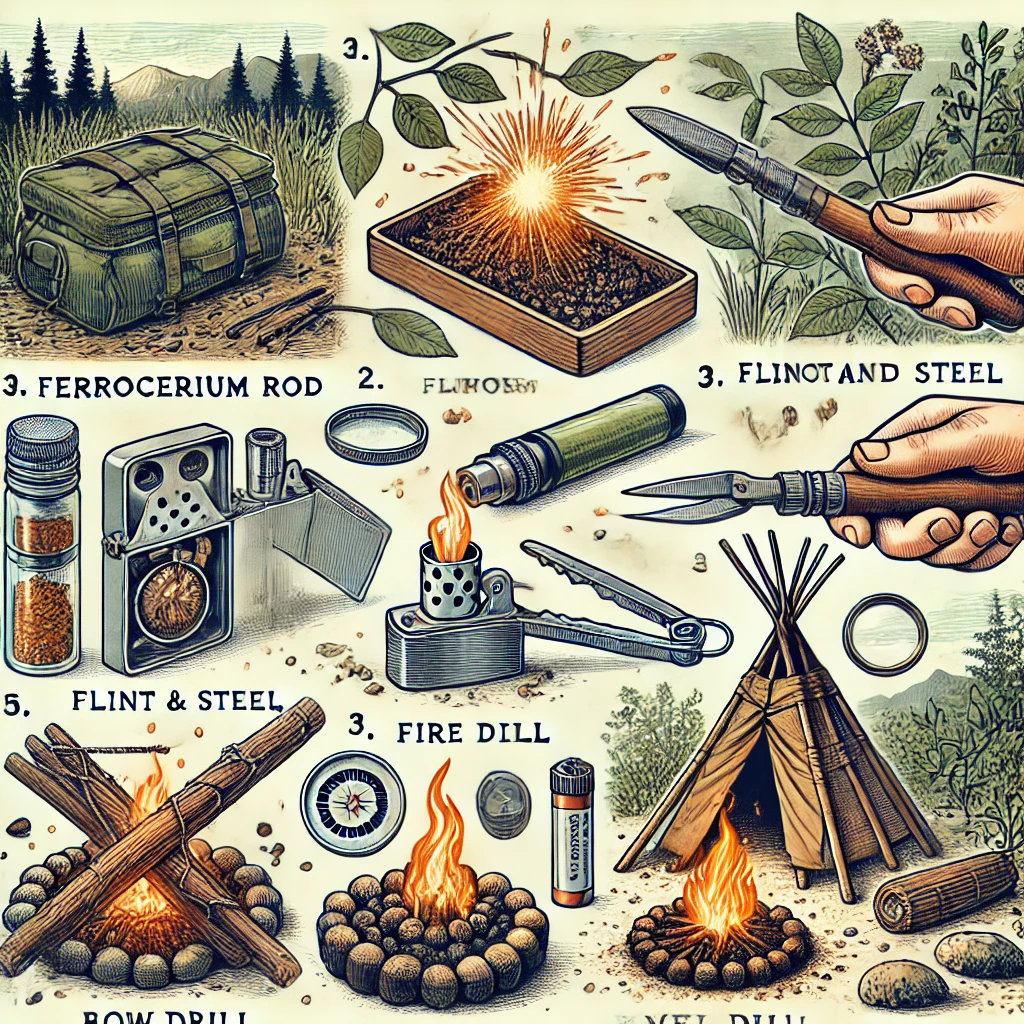When you’re out in the wilderness, having a reliable way to start a fire is one of the most important survival skills you can master. A fire provides warmth, a way to cook food, purifies water, and can even signal for help in an emergency. But how do you start a fire in the wild, especially when you don’t have matches or a lighter on hand?
Don’t worry—several tried-and-true fire-starting methods can help spark a flame when needed. Let’s explore some of the best ways to start a fire in the wild, even when the conditions are less than ideal.
Why Is Fire So Important in the Wild?
Fire is essential for survival in the wild. It keeps you warm during chilly nights or in cold weather and helps you cook food, boil water, and fend off predators. A fire can also serve as a signal in case of emergency. If you’re lost or need help, a smoky fire is a way to draw attention.
Having a fire starter in your survival kit is one thing, but knowing how to make a fire in different conditions without store-bought tools is another. Here are a few techniques to help you start that fire, even if you’re far from civilization.
What Are the Most Effective Fire Starting Methods?
1. Firestarter Kit or Ferrocerium Rod
A firestarter kit is one of the most reliable ways to start a fire, especially in damp conditions. When scraped, a ferrocerium rod, often paired with a striker, creates hot sparks. These sparks, like dry leaves, bark, or small twigs, can ignite tinder.
How to Use a Ferrocerium Rod:
- Gather dry tinder, kindling, and fuel—small twigs or sticks that easily catch the flame.
- Hold the ferro rod firmly in one hand and the striker in the other.
- Scrape the striker against the rod to create sparks that fall onto the tinder.
- Gently blow on the tinder once it ignites to encourage the fire to grow.
Ferrocerium rods work well even in wet conditions and are highly reliable. They’re lightweight, easy to carry, and can last thousands of uses, making them a top choice for survivalists and campers.
2. Bow Drill Method
The bow drill method is an ancient fire-starting technique that requires more skill but can be incredibly effective once mastered. This method uses friction to create heat, which will eventually ignite tinder.
How to Use the Bow Drill Method:
- Find a softwood spindle (a straight, dry stick) and a piece of hardwood to act as the base (called the hearth).
- Create a notch in the hearth and place the spindle into it.
- Use a bow (a curved branch with a cord tied to it) to rotate the spindle back and forth, creating friction.
- Once you see a small ember form in the notch, transfer it to your tinder and gently blow on it to ignite a flame.
While the bow drill method requires patience and practice, it’s an excellent way to start a fire when you’re in a survival situation and don’t have access to modern tools.
3. Flint and Steel
Flint and steel have been used for centuries as a fire-starting method. When you strike flint against steel, sparks are created that can light tinder, such as dry grass or leaves.
How to Use Flint and Steel:
- Hold the flint in one hand and the steel in the other.
- Strike the steel against the flint at an angle to create sparks.
- Aim the sparks at your tinder and gently blow on the tinder once it catches fire.
Flint and steel are effective in many conditions, and like the ferrocerium rod, they’re compact and reliable. Flint and steel are also great fire-starting methods for those who enjoy a more traditional approach to survival skills.
What Are the Best Tips for Ensuring Your Fire Burns?
Starting a fire is one thing, but keeping it burning is another. Here are a few tips to help ensure your fire thrives:
- Prepare your tinder carefully: Make sure it is dry and has enough small kindling to help the fire grow.
- Feed the fire slowly: Start with small twigs and gradually add larger pieces of wood as the fire grows.
- Shelter the fire from wind: Wind can quickly extinguish a small fire, so build it in a sheltered spot or use rocks to protect it from gusts.
- Have a backup plan: Always carry extra matches, a lighter, or a firestarter kit, just in case your first method doesn’t work.
Conclusion
Knowing how to start a fire in the wild is an essential survival skill that can help keep you warm, cook food, purify water, and signal for help. With methods like the ferrocerium rod, bow drill, flint and steel, fire plough, and magnifying glass, you have plenty of options, depending on your situation and available resources. Practice these fire-starting methods before heading out into the wilderness to be ready for anything. When it comes to fire, preparation is key—and with the right knowledge, you’ll always be able to light up your adventure!




